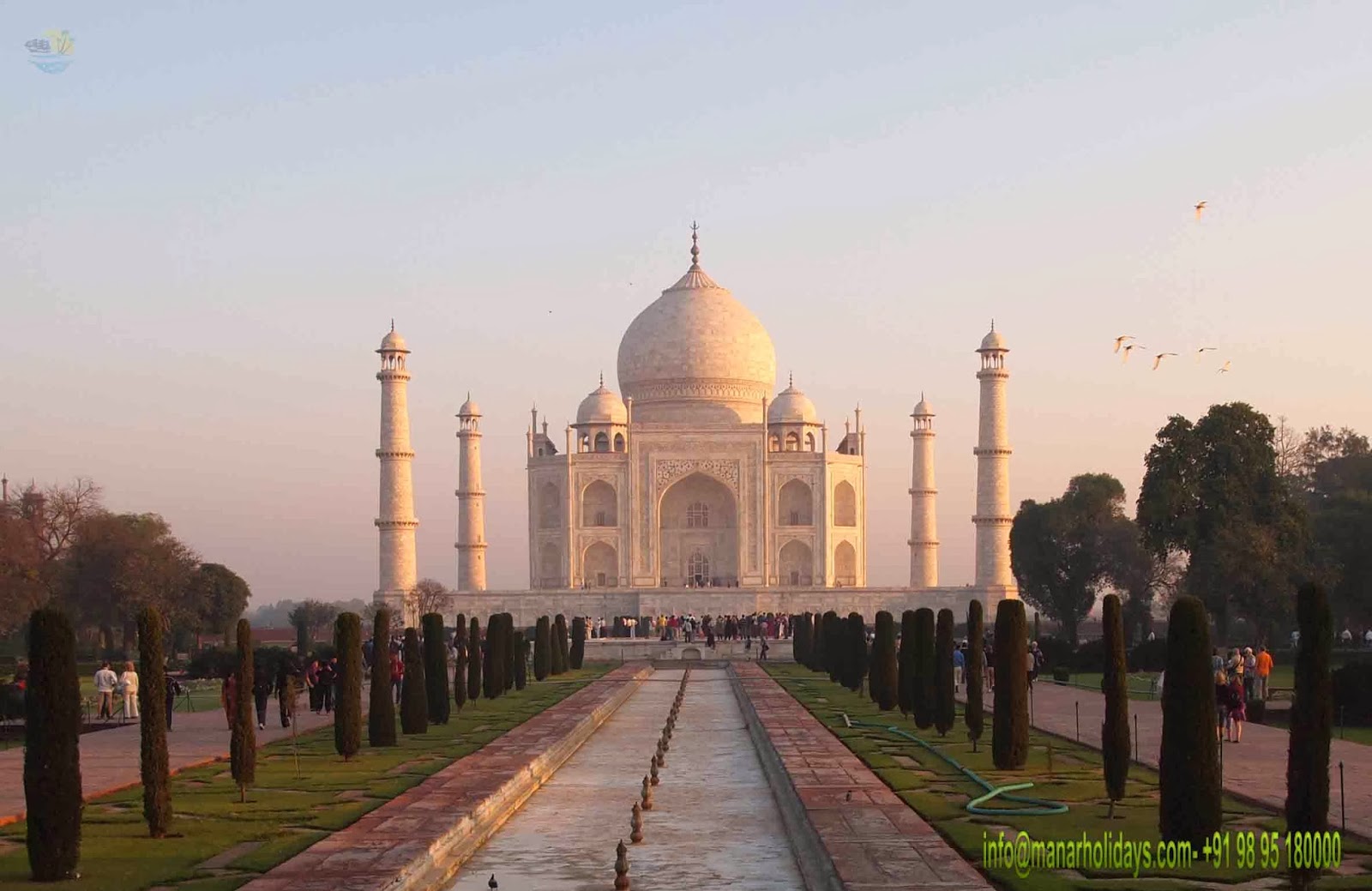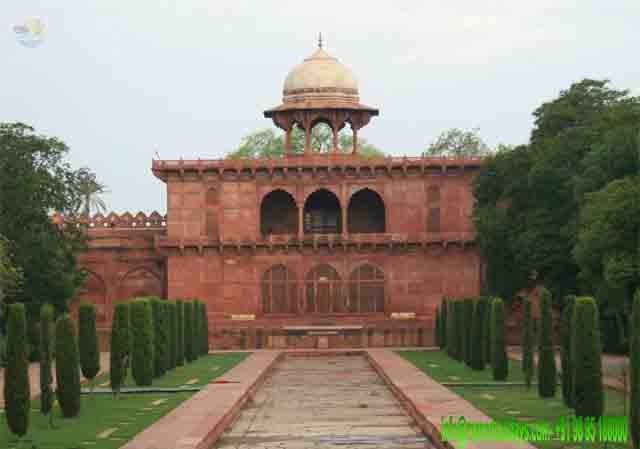



قصر تاج
The Tajmahal is the most beautiful monument built by the
Mughals, the Muslim rulers of India Tourists from all over the world
visit Agra to make a pilgrimage to Taj Mahal, India’s most famous architectural
wonder, in a land where magnificent temples and edifices abound to remind
visitors about the rich civilization of a country that is slowly but surely
lifting itself into an industrialized society as well.
Taj Mahal means "Crown Palace" and is in fact the most well preserved and architecturally beautiful tomb in the world. Taj Mahal stands on the bank of River Yamuna. It was built by the fifth Mughal emperor, Shah Jahan in 1631 in memory of his third but the most favourite wife, in fact a soul-mate Mumtaz Mahal, a Muslim Persian princess. She died while accompanying her husband in Burhanpur in a campaign to crush a rebellion after giving birth to their 13th child. The death so crushed the emperor that all his hair and beard were said to have grown snow white in a few months. The exquisite and highly skilled Inlay work was developed by Mughal lapidarists from techniques taught to them by Italian craftsmen employed at court. The look of European herbals, books illustrating botanical species was adapted and refined in Mughal Inlay work.
History obscures precisely who designed the Taj Mahal. In the Islamic world at that time, the credit for a building design was usually given to its patron rather than its architects. From the evidence of contemporary sources, it is clear that a team of architects were responsible for the design and supervision of the works, but they are mentioned infrequently.A labour force of about twenty thousand workers was recruited from across the Northern India.
Taj Mahal means "Crown Palace" and is in fact the most well preserved and architecturally beautiful tomb in the world. Taj Mahal stands on the bank of River Yamuna. It was built by the fifth Mughal emperor, Shah Jahan in 1631 in memory of his third but the most favourite wife, in fact a soul-mate Mumtaz Mahal, a Muslim Persian princess. She died while accompanying her husband in Burhanpur in a campaign to crush a rebellion after giving birth to their 13th child. The death so crushed the emperor that all his hair and beard were said to have grown snow white in a few months. The exquisite and highly skilled Inlay work was developed by Mughal lapidarists from techniques taught to them by Italian craftsmen employed at court. The look of European herbals, books illustrating botanical species was adapted and refined in Mughal Inlay work.
History obscures precisely who designed the Taj Mahal. In the Islamic world at that time, the credit for a building design was usually given to its patron rather than its architects. From the evidence of contemporary sources, it is clear that a team of architects were responsible for the design and supervision of the works, but they are mentioned infrequently.A labour force of about twenty thousand workers was recruited from across the Northern India.
The
Garden that starts from the end of the main gateway and ends near the squared
base of the mausoleum is an integral part of the Taj Mahal structure and is,
undeniably, one of the major highlights of the visit for many. The Garden is known as Paradise of
Garden. This garden,
filled with flowers, fruits, birds, leaves, symmetry, and delicacy, served many
functions along with portraying strong symbolic or abstract meanings about
paradise. A paradise which, according to Islamic beliefs, consists of four
rivers: one of water, one of milk, one of honey, and one of wine. And it is
from this concept that Char Bagh of Taj Mahal originated. Also, the symbolism
of the garden and its division are noted in the Islamic texts that describe
paradise as a garden filled with abundant trees, flowers, and plants.
TheTaj Museum is located within the complex of Taj Mahal. It is located to the
left of the platform near the chief gate of the Taj Mahal. The Taj Museum of
Agra provides the opportunity to the tourists and visitors to take a close look
at the original pieces of drawings of this magnificent marble monument. The
study of the drawings indicates the level of accuracy and precision that had
been initiated in planning the structure of the Taj Mahal. No wonder that the
Taj still features among the Seven Wonders of the World.

No comments:
Post a Comment